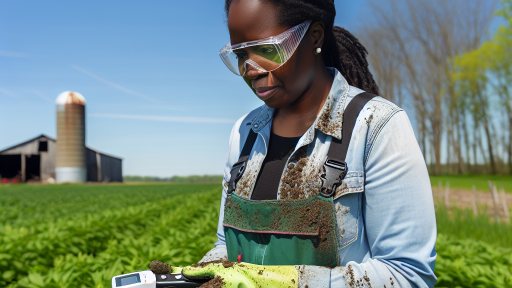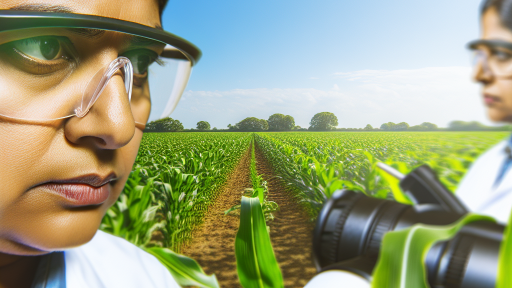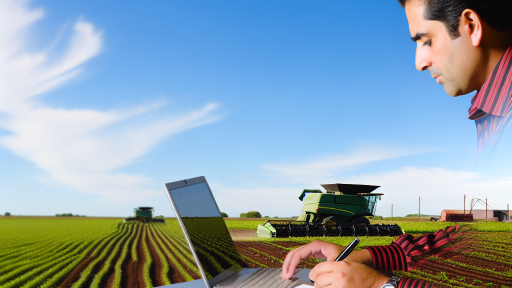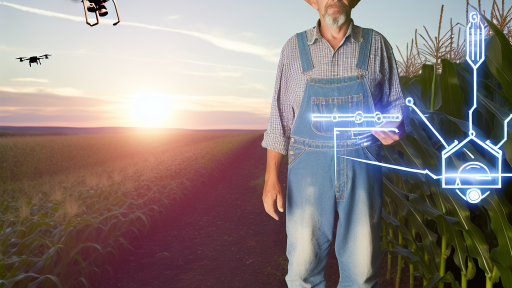Introduction to Automated Machinery in Farming
Automated machinery revolutionizes modern farming practices.
It increases efficiency and reduces labor costs significantly.
Moreover, technology boosts precision in agricultural operations.
Benefits of Automation
Farmers can experience numerous benefits from automation.
First, automated machinery enhances productivity.
Second, it minimizes human error in various tasks.
Additionally, automation allows farmers to monitor crops in real time.
This real-time data leads to better decision-making.
Types of Automated Machinery
A range of automated machines is available for farmers today.
For instance, drones assist in crop monitoring and mapping.
Similarly, automated tractors can perform planting and harvesting.
Furthermore, precision irrigation systems optimize water usage.
Challenges in Implementing Automation
Despite its advantages, automation presents certain challenges.
Initial costs for automated machinery can be high.
Additionally, training employees is essential for effective use.
Transform Your Agribusiness
Unlock your farm's potential with expert advice tailored to your needs. Get actionable steps that drive real results.
Get StartedFarmers must also consider technology’s rapid evolution.
The Future of Farm Automation
The future looks bright for automated farming practices.
Innovations in artificial intelligence improve machinery capabilities.
Moreover, integration with sustainable practices is on the rise.
Ultimately, automated technology can lead to a more productive future.
Benefits of Implementing Automated Machinery on Farms
Automated machinery significantly boosts farming efficiency.
It allows farmers to complete tasks faster than manual methods.
This acceleration reduces labor costs and time spent on each job.
Moreover, machines can operate around the clock.
As a result, productivity increases throughout the year.
Improved Precision
Automated machinery enhances precision in farm operations.
For example, GPS technology ensures accurate planting and harvesting.
This precision minimizes wasted resources and maximizes yield.
Additionally, it enhances the overall quality of the crops.
Labor Savings
Automated machinery reduces the reliance on manual labor.
This transition allows farmers to employ fewer workers.
Consequently, operational costs decrease significantly.
Moreover, it frees up workers for more skilled tasks.
As a result, overall workforce efficiency improves.
Enhanced Data Collection
Many automated machines come equipped with sensors and software.
This technology collects valuable data about crop health.
Farmers can analyze this information to make informed decisions.
In turn, these insights lead to better crop management strategies.
Additionally, data-driven decisions can increase profitability.
Showcase Your Farming Business
Publish your professional farming services profile on our blog for a one-time fee of $200 and reach a dedicated audience of farmers and agribusiness owners.
Publish Your ProfileEnvironmental Benefits
Automated machinery often promotes environmentally friendly practices.
For instance, precision agriculture reduces fertilizer and pesticide usage.
This reduction leads to less chemical runoff into waterways.
Furthermore, optimized resource use lessens the overall environmental footprint.
Scalability of Operations
Automated systems allow farms to scale operations easily.
With the right machinery, farmers can handle larger areas efficiently.
This scalability meets the growing demand for food production.
Consequently, it supports local economies and food security.
Innovations in Technology
Automation brings cutting-edge technologies to farming.
Robotics, drones, and AI shape the future of agricultural practices.
These innovations increase competitiveness in the industry.
Furthermore, they provide farmers with new tools for success.
Types of Automated Machinery Used in Agriculture
Autonomous Tractors
Autonomous tractors revolutionize farm operations.
They reduce the need for manual labor by performing tasks automatically.
These machines use GPS and sensors for precise navigation.
Farmers experience increased efficiency and reduced operational costs.
Robotic Harvesters
Robotic harvesters streamline the harvesting process.
They are designed to pick fruits and vegetables with high accuracy.
Farmers benefit from faster harvest times and less crop damage.
Additionally, these robots can work in various weather conditions.
Drones for Crop Monitoring
Drones provide aerial surveillance of large fields.
They collect data on crop health using advanced imaging technology.
This information allows farmers to make informed decisions.
Consequently, they can optimize resource usage and improve yields.
Automated Irrigation Systems
Automated irrigation systems enhance water efficiency.
These systems monitor soil moisture levels continuously.
Farmers can program them to deliver precise amounts of water.
As a result, water waste is minimized and crops receive adequate hydration.
Precision Agriculture Tools
Precision agriculture tools aid in field management.
These tools analyze data to assist in planting and fertilization decisions.
Farmers can target specific areas for improvement, thus maximizing productivity.
Moreover, this technology leads to sustainable farming practices.
Future Trends in Automated Machinery
Future trends indicate growth in smart farming technologies.
Integration with artificial intelligence will enhance decision-making.
These advancements will further reduce labor costs and increase productivity.
Farmers must stay informed about these technologies to remain competitive.
See Related Content: Smart Irrigation and Precision Agriculture Benefits
Cost Analysis: Initial Investment vs. Long-term Savings
Understanding Initial Investments
Investing in automated machinery requires significant upfront capital.
Farmers often face the challenge of financing this initial investment.
However, various financing options can help alleviate this burden.
Showcase Your Farming Business
Publish your professional farming services profile on our blog for a one-time fee of $200 and reach a dedicated audience of farmers and agribusiness owners.
Publish Your ProfileFor instance, equipment loans offer farmers a way to spread costs over time.
Leasing options may also provide access to necessary technology without a hefty purchase.
Assessing Long-term Savings
Automated machinery can drastically reduce operational costs over time.
Labor savings are one significant area where costs decrease.
Automation minimizes the need for seasonal labor, which can be unpredictable.
Additionally, machinery enhances efficiency and productivity on the farm.
Farmers often see quicker turnaround times for planting and harvesting.
Additional Benefits of Automation
Incorporating automated machinery improves accuracy in farm operations.
Advanced technology reduces waste through precise inputs.
This means better use of resources such as seeds, fertilizers, and water.
Moreover, automated systems can collect data for improved decision-making.
This data-driven approach supports sustainable farming practices.
Calculating Return on Investment
Calculating return on investment (ROI) is critical for assessing machinery costs.
Farmers should track both financial and operational metrics over time.
Evaluating yield increases against the initial investment offers clear insights.
Benchmarking against traditional methods can visualize savings.
Lastly, understanding tax incentives for agricultural automation can further enhance savings.
Discover More: Overcoming Challenges In Crop Disease Detection Systems For Farmers
Case Studies: Successful Integration of Automation in Farming
Modernizing Harvesting Techniques
Sunnyvale Farms adopted automated harvesters in 2021.
This decision increased their harvesting efficiency significantly.
Moreover, they reduced labor costs by 30%.
Farm manager Clara Johnson reported improved harvest quality.
Automation allowed them to cover 50 acres in a single day.
Enhancing Crop Monitoring
Greenfield Agriculture employed drones for crop monitoring in 2022.
These drones provide real-time data on crop health.
Farmers can now detect irrigation issues promptly.
Additionally, the aerial views assist in planning effective treatments.
This integration has enhanced their decision-making processes.
Implementing Smart Irrigation Systems
Riverbend Ranch invested in smart irrigation technology last year.
This system optimizes water usage based on weather conditions.
Consequently, they achieved a 40% reduction in water consumption.
Assistant farm manager Ethan Lee noted improved crop yield.
Smart irrigation has also lowered labor costs during peak seasons.
Transforming Livestock Management
Meadowbrook Farms introduced automated feeding systems in 2020.
This technology streamlines the feeding process for livestock.
It ensures animals receive the proper nutrition consistently.
Furthermore, labor efficiency has improved, allowing staff to focus on other tasks.
Owner Lisa Martinez states this change has increased productivity.
Utilizing Data Analytics for Yield Improvement
HarvestTech Company has been analyzing crops using big data.
They gather information from multiple sources including weather patterns.
Showcase Your Farming Business
Publish your professional farming services profile on our blog for a one-time fee of $200 and reach a dedicated audience of farmers and agribusiness owners.
Publish Your ProfileThis practice assists farmers in predicting yields more accurately.
Optimizing planting strategies is now more achievable than ever.
Farmers like Thomas Reed have noted better overall performance.
Gain More Insights: Overcoming Financial Challenges In Farming With Agri-Fintech Tools
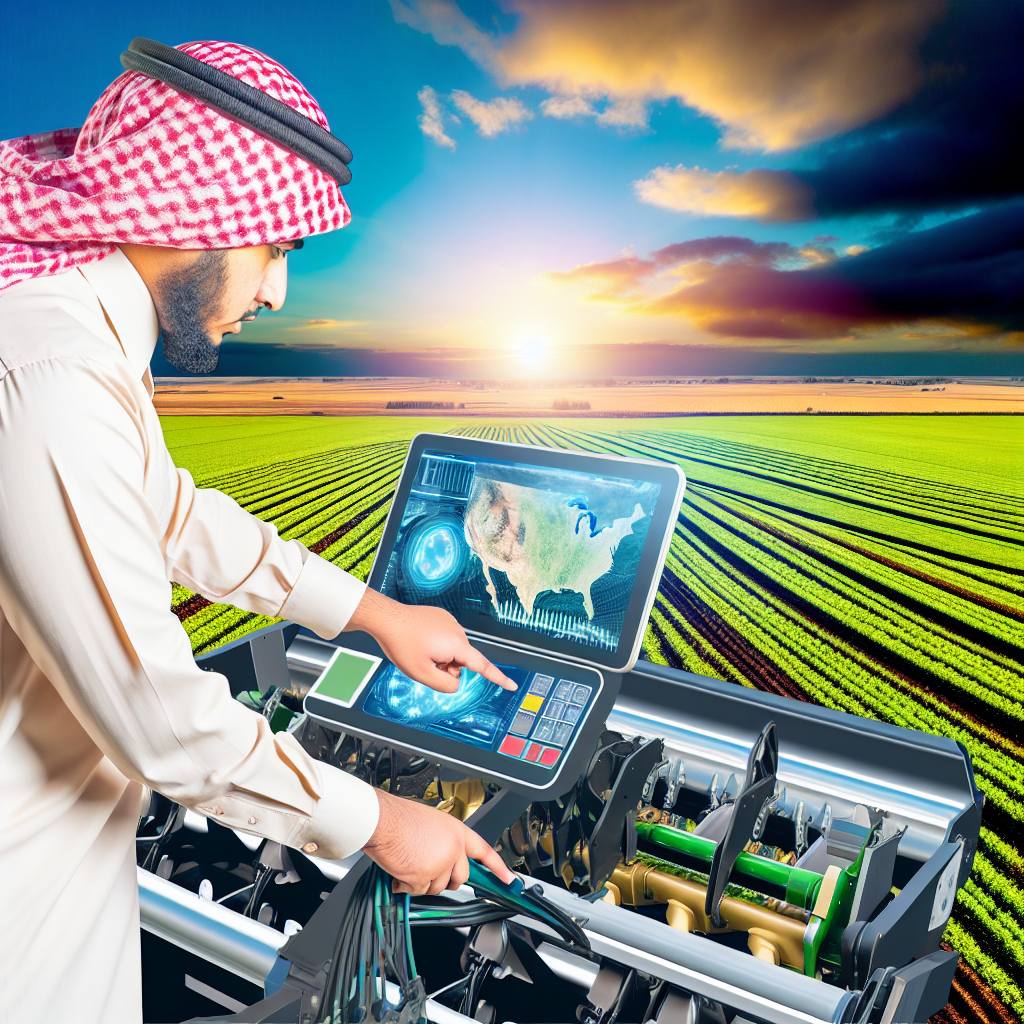
Challenges and Limitations of Automated Machinery
High Initial Costs
Investing in automated machinery demands significant upfront financial resources.
This initial expense can deter many small to medium-sized farms from adopting new technologies.
Moreover, the price of maintenance can add additional financial burdens over time.
Technical Skills Requirement
Farm workers face a steep learning curve when operating automated machinery.
Understanding advanced technology requires specialized training.
Without proper training, productivity may suffer as workers adapt to new systems.
Dependence on Technology
Farm operations become increasingly reliant on automated systems.
This dependency can lead to significant disruptions during tech malfunctions.
Consequently, farmers must develop contingency plans to address potential breakdowns.
Limited Adaptability
Automated machinery may not easily adapt to diverse farming conditions.
Certain crops or soils may require traditional approaches for optimal results.
As a result, farmers must evaluate the specific needs of their operations carefully.
Data Privacy and Security Concerns
The rise of automation introduces potential risks regarding data security.
Farmers must ensure that sensitive information remains protected from cyber threats.
Failure to safeguard data may result in significant legal and financial repercussions.
Market Uncertainty
The agricultural market constantly faces fluctuations that can impact automation investments.
Sudden changes in consumer demand can render automated systems obsolete.
Farmers should remain vigilant to market trends to protect their investments.
Delve into the Subject: The Role Of Blockchain In Modernizing Agricultural Supply Networks
Future Trends in Agricultural Automation Technology
Integration of Artificial Intelligence
Artificial intelligence is reshaping farm operations significantly.
This technology enables data-driven decision-making.
Farmers can analyze weather patterns and soil conditions efficiently.
As a result, yields increase while costs decrease.
AI algorithms improve pest and disease detection accuracy.
Consequently, farmers can take preventative actions promptly.
Advancements in Robotics
Robotic systems are becoming more prevalent on farms.
These machines undertake repetitive tasks like planting and harvesting.
Moreover, they work around the clock, increasing productivity.
Precision farming benefits from robotics through enhanced accuracy.
Robotic milking systems are also gaining traction among dairy farms.
This reduces labor and maximizes efficiency in milk production.
Expansion of Internet of Things (IoT)
The Internet of Things connects farm equipment to the internet.
Sensors collect real-time data across various farming operations.
Farmers can monitor conditions remotely from their devices.
This connectivity allows for better resource management.
For example, irrigation systems can be optimized automatically.
Showcase Your Farming Business
Publish your professional farming services profile on our blog for a one-time fee of $200 and reach a dedicated audience of farmers and agribusiness owners.
Publish Your ProfileAs a result, water conservation and crop health improve significantly.
Emergence of Autonomous Machinery
Autonomous machinery is changing the landscape of farming equipment.
Self-driving tractors can cultivate and harvest without human intervention.
Farmers enjoy more time for strategic planning and management.
This shift reduces labor dependency while enhancing efficiency.
As technology evolves, autonomous systems will cover more tasks.
Consequently, operational costs will likely continue to decline.
Focus on Sustainable Practices
Automation technology increasingly emphasizes sustainability.
Smart farming solutions reduce chemical use and minimize waste.
Moreover, they enable better resource allocation based on need.
This leads to healthier soils and more resilient crops.
Farmers are more inclined to adopt eco-friendly methods with automation.
Thus, the agricultural sector moves towards greener practices.
Best Practices for Maintaining and Operating Automated Farms
Regular Maintenance of Machinery
Regular maintenance ensures optimal performance of automated machinery.
Schedule weekly checks to evaluate equipment functionality.
Replace worn-out parts immediately to prevent larger issues.
Consult equipment manuals for specific maintenance recommendations.
Documentation of maintenance helps track performance over time.
Training Staff Effectively
Training staff enhances operational efficiency on the farm.
Provide hands-on training sessions for using automated systems.
Encourage ongoing education on new technologies and techniques.
Incorporate safety training to minimize workplace accidents.
Feedback from staff can lead to improvements in operational processes.
Monitoring Performance Metrics
Monitoring performance metrics helps identify areas for improvement.
Use software that tracks machinery usage and productivity.
Set benchmarks for crop yields and equipment efficiency.
Analyze data regularly to make informed operational decisions.
Adjust strategies based on performance analysis to boost output.
Implementing Precision Agriculture Techniques
Precision agriculture techniques optimize resource use.
Utilize GPS technology for accurate planting and harvesting.
Incorporate sensors to monitor soil health and moisture levels.
Adjust inputs based on real-time data to improve crop quality.
This approach minimizes waste and enhances sustainability.
Investing in Software Solutions
Software solutions streamline farm management processes.
Choose platforms that integrate with your machinery seamlessly.
Automation software can enhance scheduling and workload management.
Invest in inventory management systems to track supplies efficiently.
Regularly update software to maintain security and functionality.
Ensuring Compliance with Regulations
Compliance with agricultural regulations protects your farm’s reputation.
Stay informed about local and federal agricultural laws.
Showcase Your Farming Business
Publish your professional farming services profile on our blog for a one-time fee of $200 and reach a dedicated audience of farmers and agribusiness owners.
Publish Your ProfileConduct regular audits to ensure adherence to safety standards.
Documentation of compliance efforts can prevent legal issues.
Engage with local agricultural organizations for guidance and support.
Additional Resources
How OEMs can seize the high-tech future in agriculture and …

